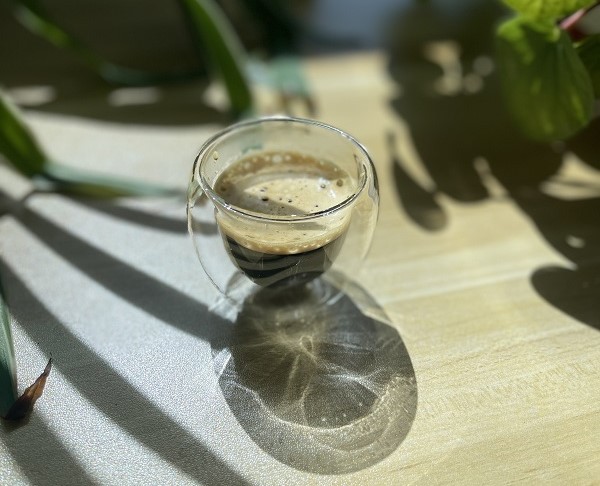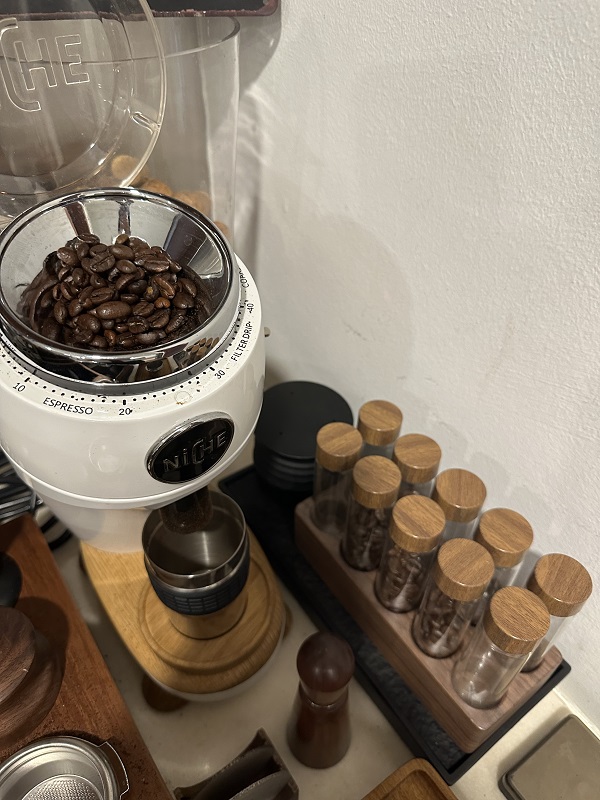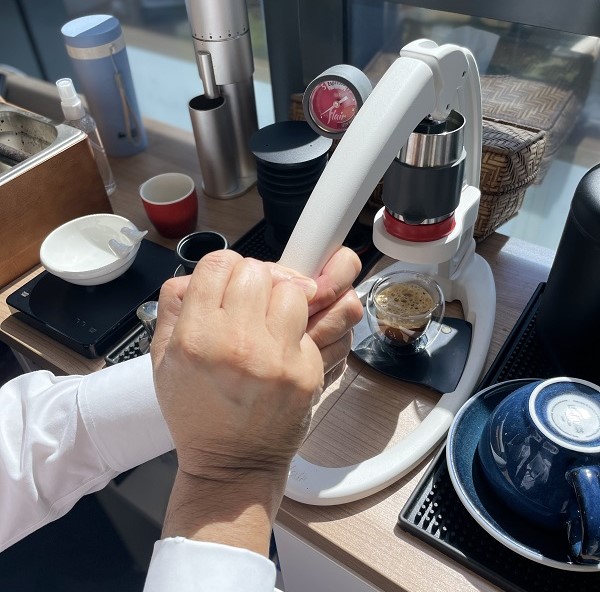The stigma associated with mental illness in general has led to what we psychiatrists call a "treatment gap" – the space between those with mental illness and those who receive evidence-based treatments. Doctors have strong self-stigma and often do not seek help for their mental illnesses until they develop serious problems. I must say that I felt this way when I reflect on my own illness. For years, I have described it as a love affair,1 treating the problem as though it was not one. It was not until I was travelling with colleagues for a conference, and I started freaking out when we could not find coffee that I began to fully appreciate the seriousness of the issue. The Diagnostic Statistical Manual of Mental Disorders, Fifth Edition (DSM-5), which is the American Psychiatric Association's classification system, names Caffeine Use Disorder as a mental illness for further study.2 I am now managing my coffee problem better and was hoping for an opportunity to share my lived experience.
When I was asked if I could write about how one can enjoy coffee, I jumped at the opportunity. I could explain how coffee can be enjoyed without falling in love with it. Enjoyment is a temporary state of happiness or joy that, though transient, adds spice to life. I thought about this between constant sips of the brown stuff and my weekend brewing ritual. I decided to explain how coffee comes in its different forms for our enjoyment. And enjoyment, like coffee, is a matter of taste, so there is no perfect blend of coffee or right way to drink it. I will suggest a few approaches to help in this personal process.
Note:
DSM-5 diagnostic criteria for caffeine use disorder: (1) a persistent desire or unsuccessful efforts to cut down or control caffeine use; (2) continued caffeine use despite knowledge of having a persistent or recurrent physical or psychological problem that is likely to have been caused or exacerbated by caffeine; and (3) withdrawal, as manifested by the characteristic withdrawal syndrome for caffeine, or when caffeine or a closely related substance is taken to relieve or avoid withdrawal symptoms. Additional criteria includes craving, tolerance, and taking caffeine in larger amounts or over a longer period of time than intended, interference with functioning, and the giving up of important social and occupational activities.

A cup of espresso manually made using the Flair Neo at 9 bars of pressure with crema and all
Humble bean-ginnings
Let's start with coffee itself. Coffee is made of ground roasted coffee beans mixed with water to produce an often bitter but sometimes sweet and fruity (some say acidic) mix. I would add that there is Arabian "coffee" that is made from green coffee beans (before being roasted) but I do not call that coffee in the conventional sense. Coffee beans were originally from Arabia (hence the name Arabica) but are grown all over the world today. The coffee bean is harvested from the Coffea plant, which has many varieties in over 70 countries but primarily in the equatorial regions of the Americas, Africa, Southeast Asia and the Indian subcontinent. The original Arabica coffee comes from plants which need a certain altitude to grow, while the more ubiquitous Robusta plant grows almost everywhere. Although the connoisseur tends to prefer Arabica beans, it is uncertain why one is considered superior to the other, as the key element lies in the way the green beans are roasted and prepared for coffee making.
In Singapore, our coffee shop coffee is often made with Robusta beans (which is considerably cheaper) but roasted with many ingredients, such as butter and sugar, that enhance its taste. The coffee's fragrance is extracted through a brewing process of adding water to the ground and roasted beans. This process depends on the grind size of the coffee, the temperature of the water and the pressure at which the water flows through. For example, the size of the grind determines the surface area with which water can extract the coffee. Espresso coffee needs high temperatures and pressure while a cold brew just depends on letting water soak through the coffee grounds in the fridge overnight.
Brewing the elixir
Next, the process of brewing coffee. I prefer to make my own coffee because I like to tinker with the process, and a few minutes of effort seems to enhance its taste. Before I talk of machines, it is important to familiarise yourself with certain parts of the machine. Besides the part that heats up the water and produces steam, there is a large holder for ground coffee to sit in called the portafilter. Within the portafilter, we have baskets that filter the coffee and they come in variable sizes.
Next are the machines that you buy for the brewing process. There are sophisticated manual espresso machines like the Italian La Pavoni to the Kickstarter unicorn Flair which can set you back from about $100 to $1,000. This is in comparison to the inexpensive AeroPress or even a French press, often priced well below $100. The French press, notably, may be more like drip coffee than an espresso machine.
Automated coffee machines can range from fully automatic ones to one that gives you complete control of the process, including having to buy a good grinder. I am using what is considered a mid-range prosumer product called the Lelit Bianca. The most expensive in this class must be the La Marzocco brand, which can set you back by almost $10,000.
For those of us who prefer the beverage made in the comfort of a cafe, we are left with making two decisions. The coffee blend – which is what coffee you would like, its origins and the types of beans used – and the way the coffee is made, whether dripped or by using an espresso machine. Most restaurants would make espresso coffee, but in specialty coffee shops, you have a choice. This process is very much based on your personal taste. I like dark roasted coffee from South America that is not flavoured, made espresso style with added water. This is usually called long black (in Europe) or Americano (in North America), although there are differences between the two which I will touch on later. Espresso coffee is an intense experience as it pushes hot water under pressure through the ground coffee. Drip coffee is a more leisurely process, which often does better with lighter roasted beans, and is also not as intense.

The Lelit Bianca V3 is fully fledged espresso maker with two boilers, allowing us to steam milk and make coffee at the same time. To me, it is the best value at this price point for the home barista
The art of drinking
Finally, how do we drink coffee? Most of us imagine coffee to be an eye-opener. This is a bad habit to be rejected vigorously. If one drinks coffee to wake up, it is akin to becoming an alcoholic. It is okay to drink coffee in the morning, but only if one uses it as a complement to breakfast.
Coffee was originally designed to stimulate discussion in intellectual circles, but like good wine, it also goes well with food. Most people assume that it should be consumed with sweet delicacies, but depending on the blend, coffee can go well with savoury dishes too. When thinking about coffee pairings, one thing is to consider the coffee blend being used. Dark coffee is often more bitter and rich, and is best taken with sweet foods, while light or medium blends tend to pair well with savoury foods. For example, cakes go well with more bitter coffees while curry puffs may go well with more fruity coffees.
Another important component of coffee is the milk or sugar that is often added to it. I like my coffee black throughout the day, and so I drink long black or Americano, but let me first explain the various methods of mixing coffee with milk and other accompaniments. Coffee from an espresso machine can be drunk straight and is called an espresso. 20 g of coffee grounds makes a double shot of 40 g of coffee. If you want a single shot, this can be done with a smaller basket or with a double-spouted portafilter. A long black is a single espresso shot poured into 40 g of water while an Americano is 40 g of water poured into the espresso shot. Though the ingredients are identical, the order of operations changes the drink.
A latte is a coffee drink with steamed milk added, with the steamed milk often forming two-thirds of the cup, while a cappuccino is only one-third steamed milk with the last third of foam. This means that latte is often creamier while cappuccino is lighter as a drink. Often, some chocolate powder may be sprinkled on top as well. You may ask, what about a flat white? That is likely to be very similar to a latte, but which contains less steamed milk. These so-called coffee recipes include sugar and other syrups used to enhance its taste but often detract one from the main drink of coffee. Again, we should focus on our enjoyment rather than decide what coffee is the "best". You may have noticed by now that I make no mention of instant coffee. Having sampled and enjoyed the art of coffee-making in its various forms, I no longer try and drink any of those these days.

Coffee set-up in my workplace, using the Flair Neo with the LAGOM mini compact electric coffee grinder (in the background)
Always time for a cuppa
One last point about enjoying coffee is timing. Most people drink coffee in the morning, but coffee is a beverage meant for all-day drinking. Because of its caffeine content and acidity, it is probably wise not to drink too much at one go, and better to drink it slowly throughout the day. Coffee can be a wonderful midday, afternoon or even evening drink. Morning coffee is best taken with breakfast and sipped to enjoy both its fragrance and alerting effect. Personally, I sometimes take one late morning at meetings because it stimulates my conversations and creativity. Coffee after lunch is helpful in reducing post-prandial drowsiness and is a good complement to desserts too. Tea and coffee, what appears to sound like an oxymoron, is a wonderful addition to tea break or just as an afternoon drink. Finally, coffee can also be enjoyed at night after dinner. I usually take that night dose with milk.
There is also an option for decaffeinated coffee, which makes now an opportune time to share a little about decaffeinated coffee. Decaffeinated coffee is made using various methods to remove 97% of the caffeine in the coffee, which is done before the coffee is roasted. There are a few ways of extracting the caffeine, including using solvents, water and carbon dioxide. This may affect the taste and fragrance of the coffee. Several studies have suggested that decaffeinated coffee is healthier in that it has antioxidants and reduces risk of diabetes and premature death.3 Personally, I would recommend decaffeinated coffee later in the day because high caffeine levels may affect your sleep.
As you can see, coffee can be just a favourite beverage, but it can also be a passion. I would recommend that you read James Hoffman's latest book for more detailed information.4 It is important that we do not make coffee an overvalued idea or become madly in love with it, otherwise you will have to undergo a treatment programme,5 or come and see me!